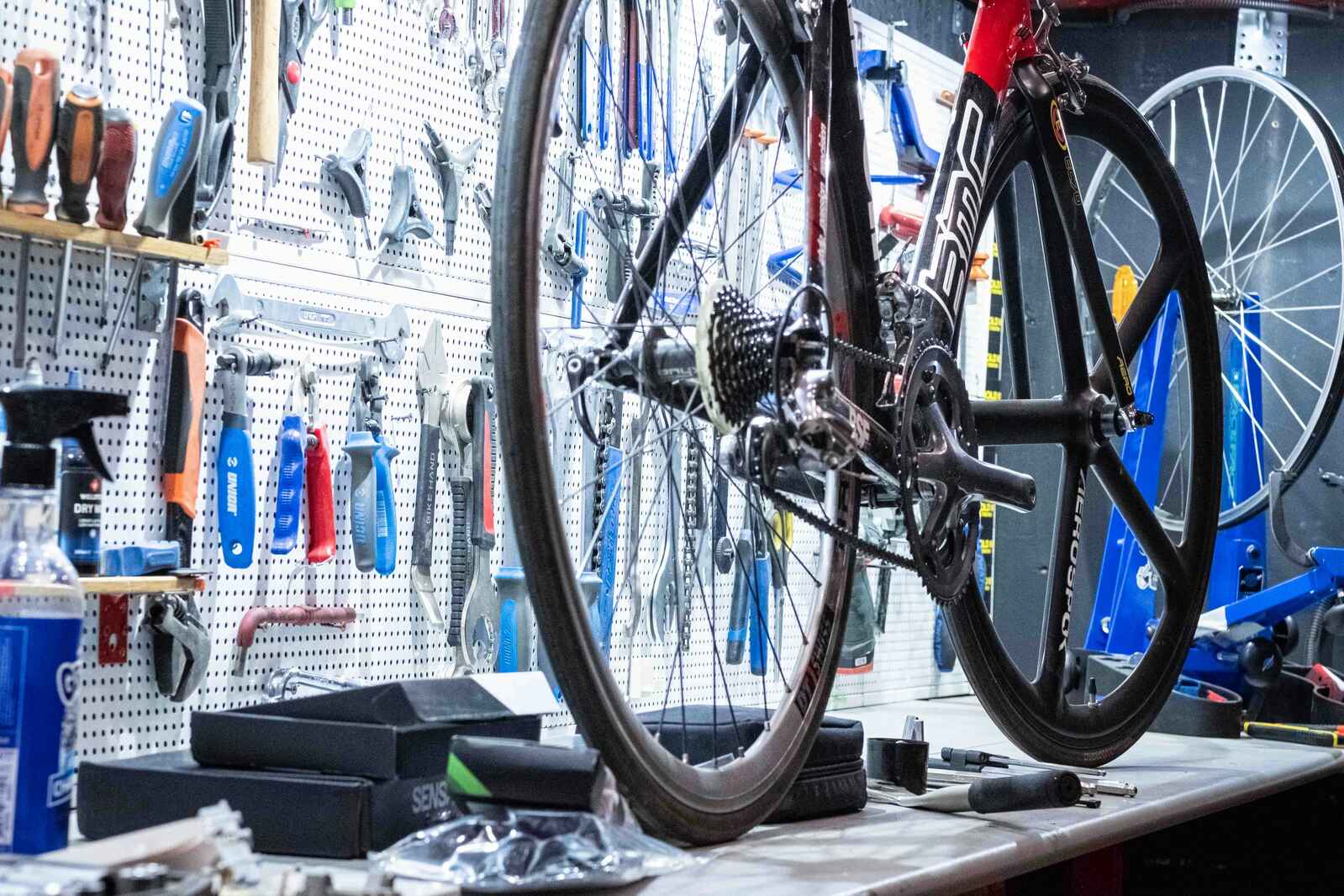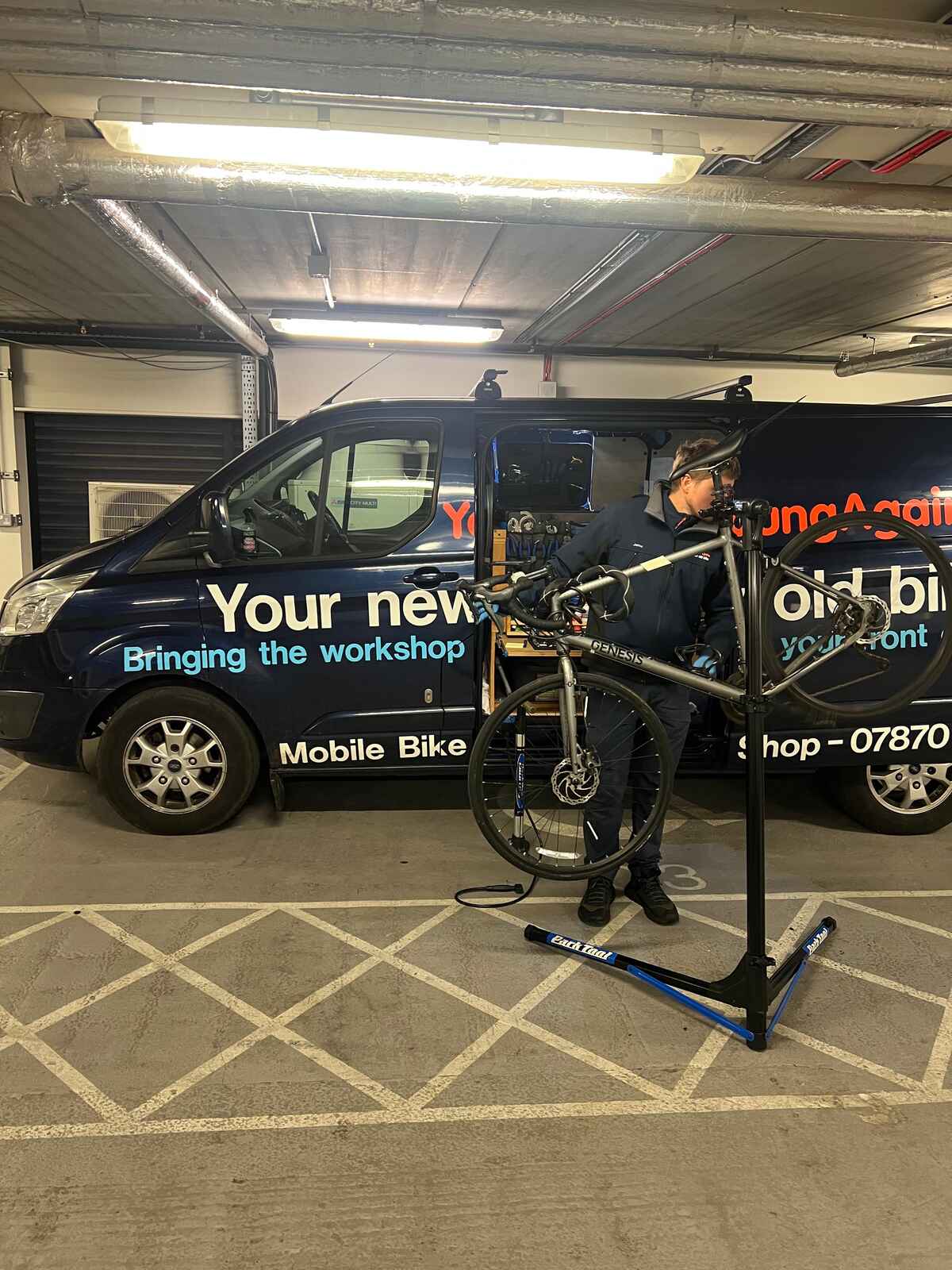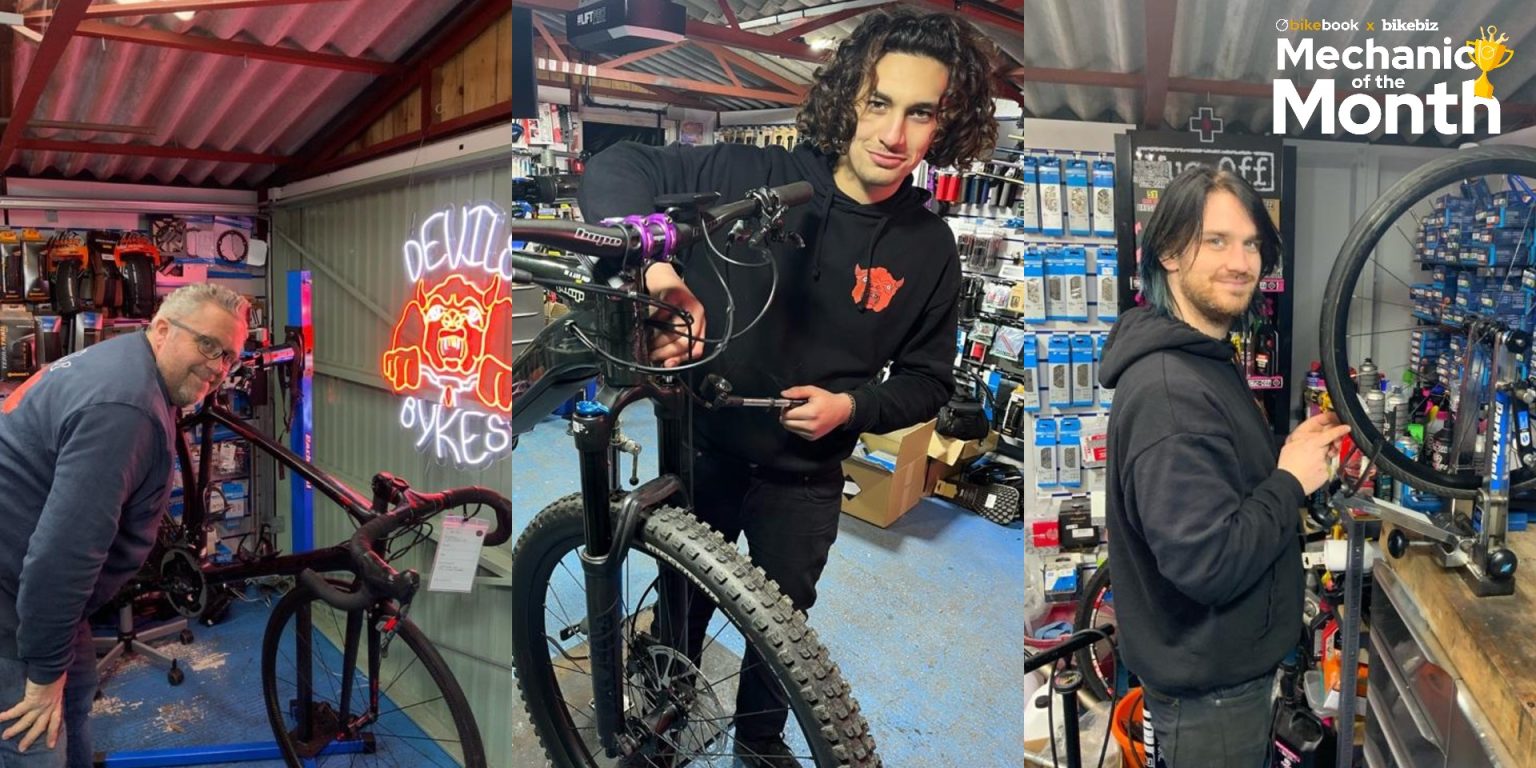December 11, 2025
•
10 minute read
Top 10 Must-Have Tools for Every European Bicycle Mechanic
An Allen Key Set is indispensable for tuning and assembling bicycles. You're likely to encounter bolts in various places requiring different sizes, from adjusting the seat post to altering the stem height.
Jake Fieldsend
Founder & CFO
You've likely experienced the frustration of dealing with a troublesome bicycle that just won't cooperate. Whether it's a misaligned wheel or a stubborn chain, these issues can slow down your workflow and frustrate your clients. As a dedicated bicycle mechanic in Europe, having the right tools is crucial not only for efficient repairs but also for maintaining your well-earned reputation. So, let's cut to the chase. In this guide, we'll explore the top 10 must-have toolsthat can transform your repair process, making it smoother and more reliable. Each tool we'll discuss is more than just a piece of metal or plastic — these are the indispensable allies you'll need in your toolbox.
1. Introduction to Bicycle Maintenance Tools
1.1 Why Quality Tools Matter
Turning a spanner and expecting precise results might often rest on sheer luck if the tools in hand aren't reliable. Understanding that the calibre of your tools directly affects the quality of your repairs is key for anyone serious about bicycle maintenance. High-quality tools ensure precision, reduce the likelihood of causing damage to a bike's components, and ultimately help maintain the integrity of your work. They're an investment rather than an expense.
- Durability: Quality tools withstand the daily rigours of repair tasks without faltering, ensuring longevity in your professional toolkit.
- Precision: When it comes to tuning delicate parts like derailleur hangers or headset cups, precision tools guarantee the perfect alignment every time.
Pro-tip: Invest once in high-grade tools, and you'll save multiple times over on replacements and potential repairs caused by tool-induced damage.
1.2 Understanding Basic vs Advanced Tools
Breaking down your toolkit can be as simple as splitting it into basic and advanced categories. Basic tools are your go-to for everyday repairs — think tyre levers, Allen keys, and chain-breakers. They're indispensable for quick fixes and regular maintenance that keeps wheels turning.
Advanced tools, on the other hand, cater to more specialised jobs involving the drivetrain or wheel truing. For instance, a torque wrench ensures that all bolts are fastened to the correct specifications, which is crucial for high-performance bikes.
- Basic Tools:
- Tyre Levers
- Allen Keys
- Chain Breakers
- Advanced Tools:
- Torque Wrench
- Bottom Bracket Tools
- Cassette Lockring Tool
Pro-tip: Categorise your tools based on your repair frequency and complexity. This organisation will help you quickly grab the right tool and maintain an efficient workflow.
2. Top 10 Must-Have Tools for Every European Bicycle Mechanic
2.1 Allen Key Set
An Allen Key Set is indispensable for tuning and assembling bicycles. You're likely to encounter bolts in various places requiring different sizes, from adjusting the seat post to altering the stem height. A complete set, typically ranging from 1.5mm to 10mm, helps handle all common fittings without fuss. Opt for a long-handled version; it offers better leverage, making it easier to apply the precise torque needed to avoid stripping bolts.
Moreover, having a ball-end Allen key set allows you to work at an angle, a handy feature when space is tight. Invest in a high-quality set; cheaper options might quickly round off or snap under pressure. This investment pays off through durability and reliability in any critical repair situation.
Pro Tip:
- Use a T-handle design for a blend between reach and torque, providing comfort over extended use.
2.2 Tyre Levers
Tyre Levers make changing tyres a breeze. Essential for any mechanic, they’re used to pry tyres away from rims quickly and without damage. Choose a robust set, ideally made from plastic to prevent scratching alloy rims. Always carry more than two; having an extra can make a stubborn tyre manageable.
While they're simple, poorly designed levers can snap under pressure. Look for ones with a slight curve and a lip to easily catch the tyre's edge. Some come with a handy spoke clip, letting you secure them in place while you work.
Pro Tip:
- Go for levers with storage clips for space-saving solutions in your toolbox.
2.3 Chain Tool
A solid Chain Tool is crucial for every mechanic, allowing you to split and join chains effortlessly. When a chain breaks mid-ride or needs replacement, a reliable device can be a ride-saver. It's vital for installing quick links and shortening new chains to the correct length.
Select a tool compatible with a wide range of chain types, including 12-speed ones frequently found in high-performance bikes. A compact, durable chain tool with a replaceable pin will ensure longevity and consistent performance.
Pro Tip:
- Look for one with a guide to maintain straight pushes, avoiding damage to the links.
2.4 Cable Cutters
Efficient Cable Cutters ensure clean cuts for gear and brake cables. Frayed cables lead to poor performance and frustrating repairs. A dedicated cutter designed for bike cables slices through without fraying, crucial for smooth functioning controls. Avoid using multipurpose tools as they often squash instead of cutting cleanly.
Ensure they have comfortable, non-slip grips for safety and precision during use. An integrated crimper is a bonus, allowing you to secure cable ends without additional tools.
Pro Tip:
- Regularly sharpen blades to maintain crisp, effortless cutting over time.
2.5 Torque Wrench
A Torque Wrench ensures vital components, like stem bolts and crank arms, are tightened to exact specifications, crucial for bicycle safety and performance. With carbon components becoming more common, avoiding over-tightening which can cause damage is even more critical.
An adjustable model with a range suitable for both small and large components is an excellent choice. Ensure it comes with a calibration certificate for guaranteed accuracy, and be mindful that maintenance may include periodic recalibration.
Pro Tip:
- Use with adapter sets to increase versatility across different fasteners.
2.6 Bottom Bracket Tools
Specialised Bottom Bracket Tools are necessary for both installation and removal. With various bottom bracket standards like BSA, BB30, and Press-Fit, it's important to have compatible tools for each, preventing damage to parts or frames.
Invest in tools with high-quality steel construction for durability. Including both a wrench and a socket-type tool in your kit allows work on diverse bicycle models without needing a separate tool.
Pro Tip:
- Check for universal fit options to cover multiple standards efficiently.
2.7 Chain Whip and Cassette Lockring Tool
A Chain Whip and Cassette Lockring Tool are essential for cassette installations and removals. The chain whip restrains the cassette while the lockring tool loosens or tightens it. This task is frequent for cleaning, maintaining, or upgrading cassettes.
Ensure the pin fit matches your particular cassette types and is constructed of robust, hard-wearing materials. Grip comfort is crucial during use when dealing with stubborn components.
Pro Tip:
- Ensure tool compatibility with e-bikes, especially when torque levels can differ.
2.8 Spoke Wrench
A precise Spoke Wrench is critical for wheel truing and tension adjustment. Different size options are available to suit various nipple sizes on wheels. Keeping wheels true ensures a smooth, wobble-free ride, which is essential for performance and safety.
Multi-size wrenches are convenient, allowing one tool to serve several wheel types. A well-designed spoke wrench reduces slippage, preventing damage to nipples.
Pro Tip:
- Practise spoke tension equalisation for long-lasting wheel integrity.
2.9 Hex Wrench Set
A complete Hex Wrench Set is another staple of any repair shop, used for bolt and component assemblies throughout bikes. Ensuring high-tolerances in manufacturing prevents rounded bolts and improves longevity in your tools.
Choosing a set with both metric and imperial sizes ensures compatibility with all bicycles you might encounter. They are perfect for torque-sensitive fasteners, often found in modern bicycle builds.
Pro Tip:
- Magnetic tips can simplify positioning and prevent dropping in awkward spots.
2.10 Bike Repair Stand
An adjustable Bike Repair Stand transforms your working efficiency, enhancing both comfort and accessibility when performing bicycle maintenance. Secure your bike at a suitable height, reducing strain and allowing unfettered access to all parts.
Consider stands with adjustable height and swivel capabilities for easy access at any angle. Stability and a good clamping mechanism are vital in preventing accidental drops or frame damage during work.
Pro Tip:
- Portable stands are ideal for fieldwork or mobile repair services.
3. How Bikebook Supports European Bicycle Mechanics
3.1 Finding the Right Tools Easily
Are you tired of endlessly searching for the best bike tools on multiple sites? With Bikebook, you streamline your search for local mechanics and their expertise, allowing you to ensure you have the right tools without the hassle. Here is how you benefit:
- Local Expertise: Connect with local mechanics who have knowledge of the best tools for your region’s specific cycling needs.
- Time-Saving: Skip the long searches — access a comprehensive database to quickly compare nearby mechanics renowned for their well-equipped workshops.
Pro-tip: When selecting tools, remember that local mechanics often know weather-specific requirements, which can vary widely across Europe from the wet climates of the UK to the dry heat of Spain.
Having a reliable platform like Bikebook means you can also compare and connect with workshops offering the tools and services required for particular bike models, including e-bikes. This aspect is crucial, especially if you're in areas like Italy where e-biking through hilly terrains is common. Let local insight guide your tool collection for a more efficient workshop set-up.
Pro-tip: Investing in tools recommended by local professionals not only aligns with your region's demands but also increases your customer satisfaction. Happy customers mean repeat business and word-of-mouth referrals.
3.2 Connecting with Local Cyclists
Reaching the cyclist community is essential for any bicycle mechanic. Bikebook helps you connect with local cyclistswho need your services, creating a thriving network within your community. Consider the following advantages:
- Targeted Reach: Make your services visible to cyclists nearby, ensuring your expertise is matched with those needing it most.
- Community Engagement: Build relationships with regular riders who rely on your services, fostering loyalty and increasing referrals.
Pro-tip: Engage with cycling clubs via Bikebook to offer workshop sessions. This engagement creates an opportunity to showcase your aptitude and build trust.
Joining a platform like Bikebook means you keep a steady stream of cyclists coming through your doors seeking repairs and maintenance. For instance, popular routes in France often lead to shared insights about reliable local mechanics via word of mouth among cyclists. Being accessible to your locale’s riding community translates to lasting business relationships.
Pro-tip: Consider seasonal offers - special tune-ups before cycling seasons commence can attract more customers needing pre-season checks.
3.3 Growing Your Bicycle Repair Business with Bikebook
Bikebook not only simplifies the process of finding local mechanics, but also significantly boosts your business growth. By listing your services, you ensure:
- Increased Visibility: Gain exposure on a platform dedicated to connecting riders with mechanics.
- Customer Trust: Leverage genuine reviews to instill confidence in new customers.
- Business Insights: Access data on the most requested services, helping you to refine your offerings.
Pro-tip: Encourage satisfied customers to leave reviews on Bikebook. Good reviews enhance credibility, inspire more bookings and reflect positively on your business reputation.
Expanding through Bikebook allows you to capture a larger market share without hefty advertising budgets. Focus on the riding trends of your area — from mountain biking trails in the Swiss Alps to urban cycling lanes in Amsterdam. Offering a specialised service based on local cycling preferences can differentiate you.
Pro-tip: Stay updated on common bike issues reported by customers in your area. Tailor your services to regularly address those needs, enhancing customer retention.
In conclusion, equipping your workshop with the right tools and effectively engaging with both customers and local communities are key to success as a bicycle mechanic in Europe. Platforms like Bikebook offer unparalleled support by connecting you with cyclists and streamlining your search for tools and professional development. Grow your business and maintain high service quality by leveraging these digital resources to make informed decisions about the tools and services you offer. Consider exploring how Bikebook can transform your connection with local riders and grow your enterprise. Learn more about how we can help your bicycle repair business thrive with Bikebook.



